Abstract
The relationship between tracheary element differentiation, cell proliferation and growth hormones was examined in agar-grown soybean callus. The time course of cell division and tracheary element formation in tissues grown on a medium containing 5 × 10−7m kinetin and 10−5m NAA was determined by means of maceration technique. After a slight lag period, a logarithmic increase in cell number was observed through the twelfth day of the culture period. Cell numbers increased at a considerably slower rate after the twelfth day. The rate of tracheary element formation varied with the rate of cell proliferation. Tracheary elements increased logarithmically during the log phase of growth. As the rate of cell division decreased after the twelfth day of culture, the rate of tracheary element formation also decreased. In the presence of 10−5m NAA, cell number increased as the kinetin concentration was increased between 10−9 and 10−6m. However, tracheary element formation was not initiated unless the kinetin concentration was 5 × 10−8m or above. When the Biloxi callus was subcultured repeatedly on media containing 10−8m kinetin, a tracheary element-free population of cells was obtained. This undifferentiated tissue produced tracheary elements upon transfer to a medium containing 5 × 10−7m kinetin. In the presence of 5 × 10−7m kinetin, NAA stimulated cell proliferation between 10−7 and 10−5m, but no tracheary elements were formed without auxin, or with 10−7m NAA. Neither NAA nor kinetin at any concentration tested stimulated tracheary element formation in the absence of an effective level of the other hormone. However, 2,4-D at 10−7 or 10−6m promoted both cell proliferation and tracheary element differentiation in the absence of an exogenous cytokinin.
Full text
PDF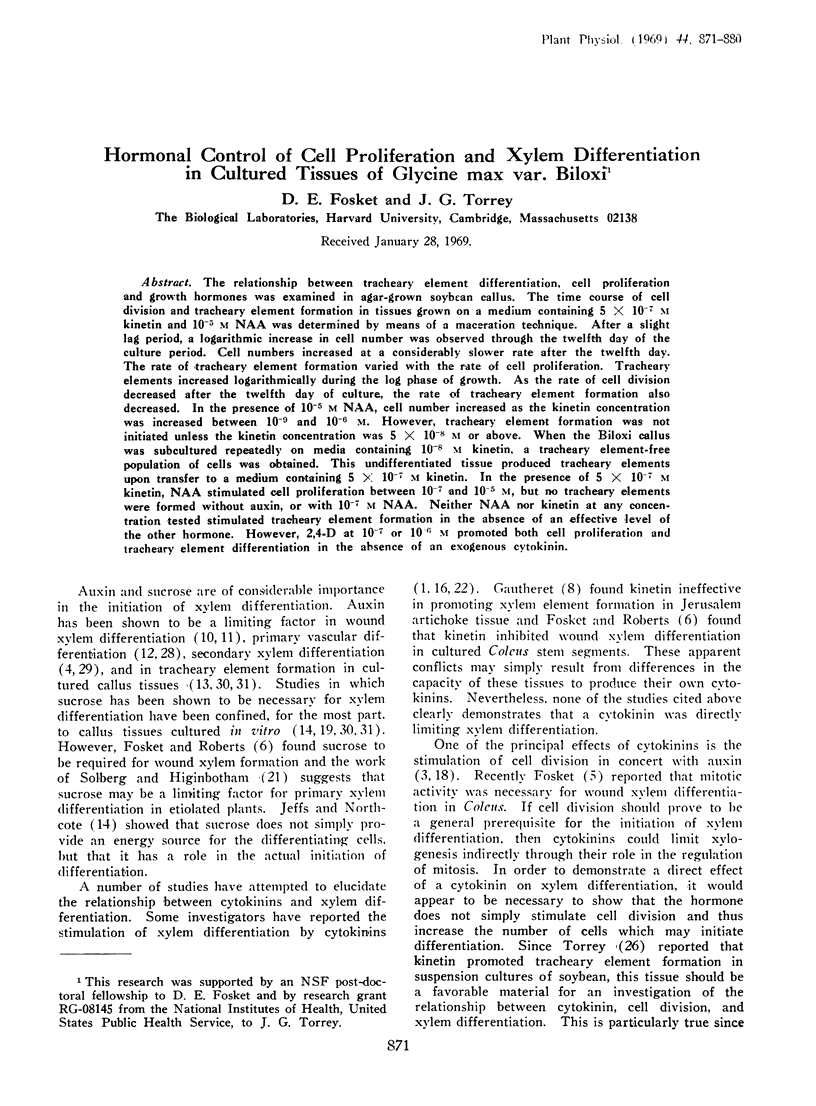
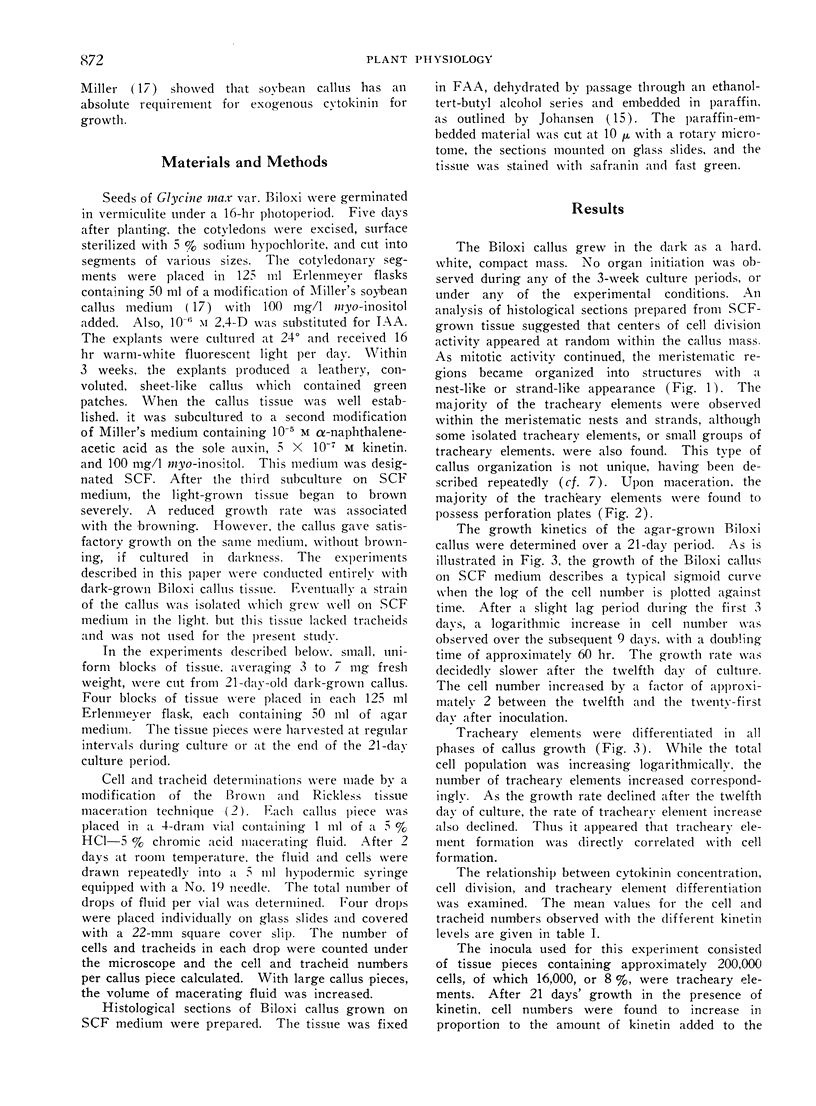

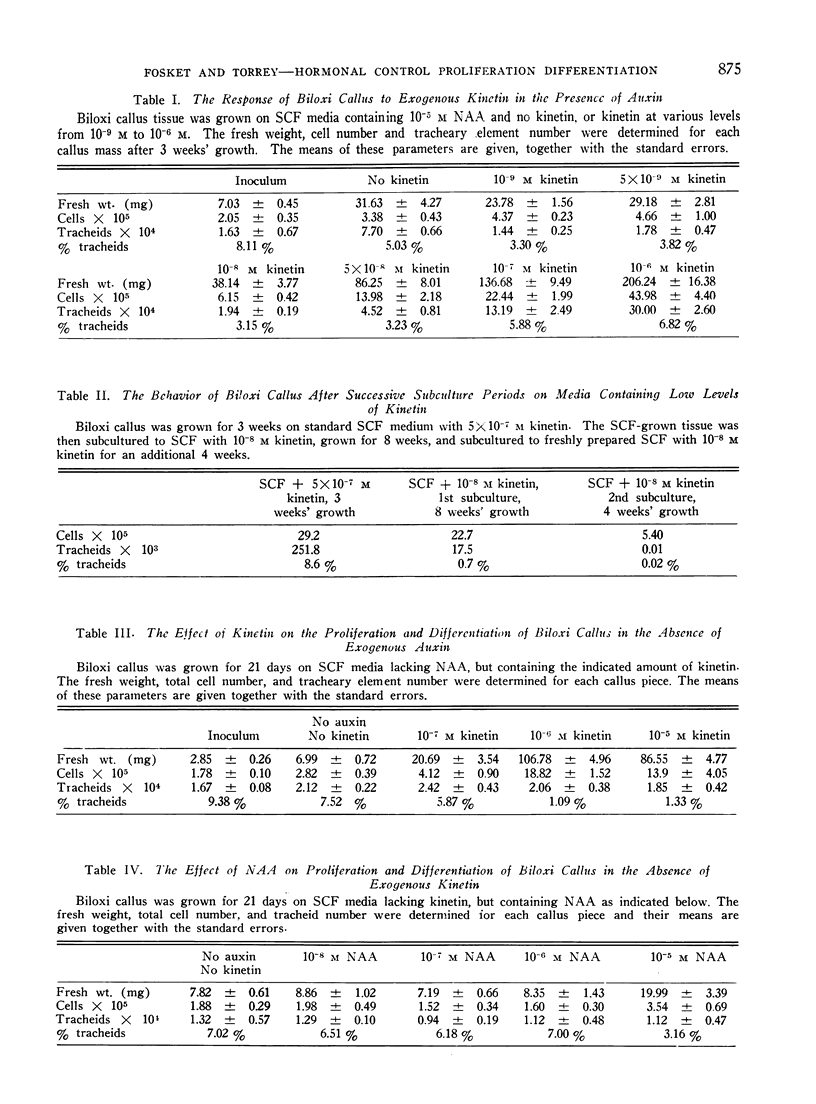
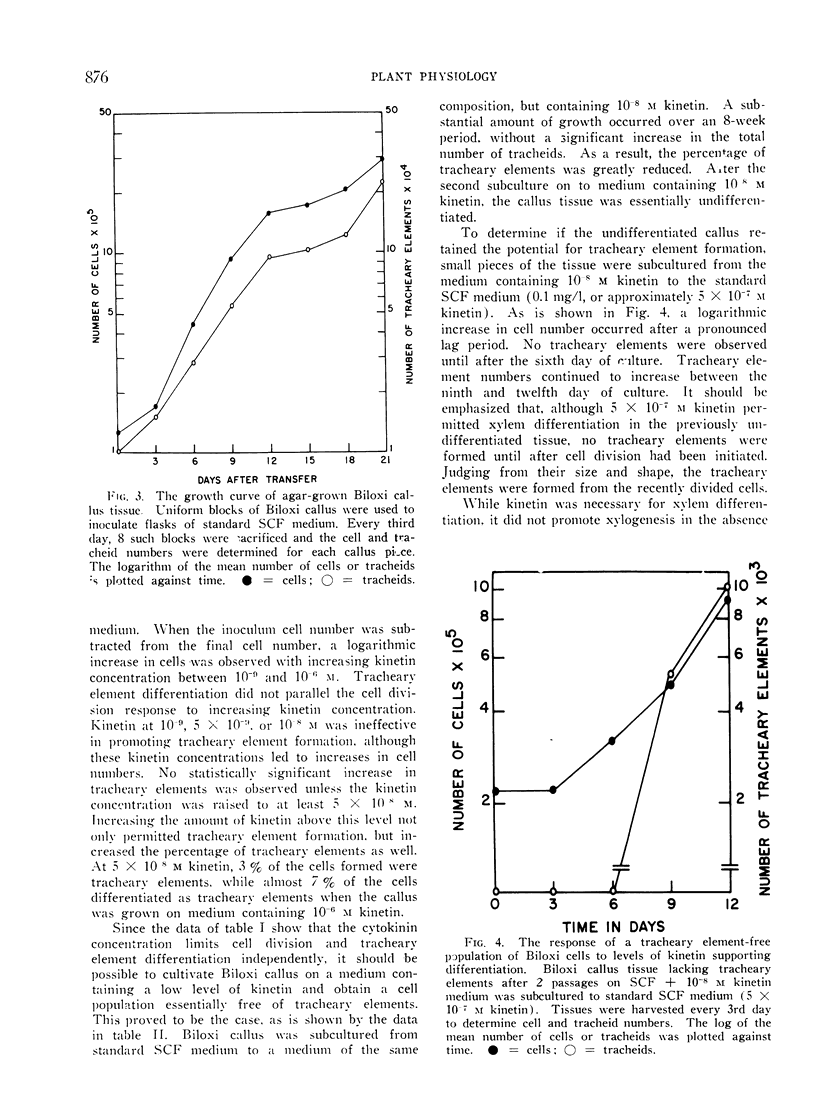
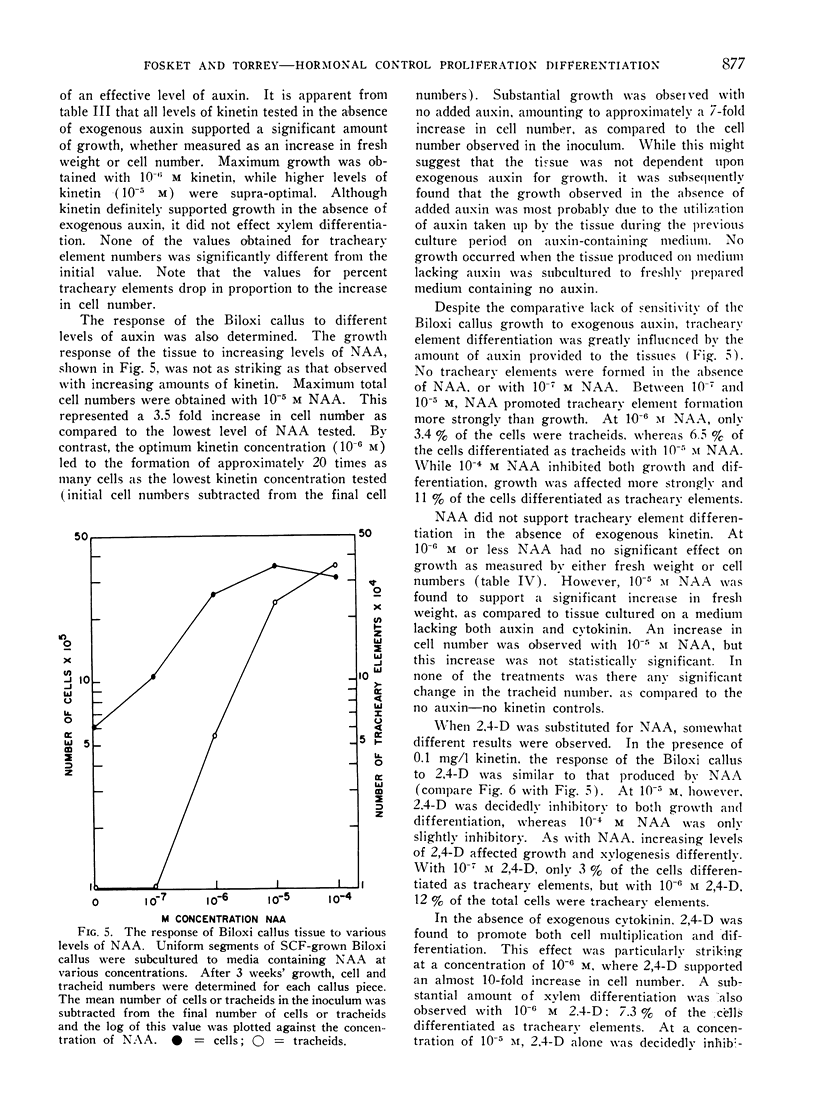

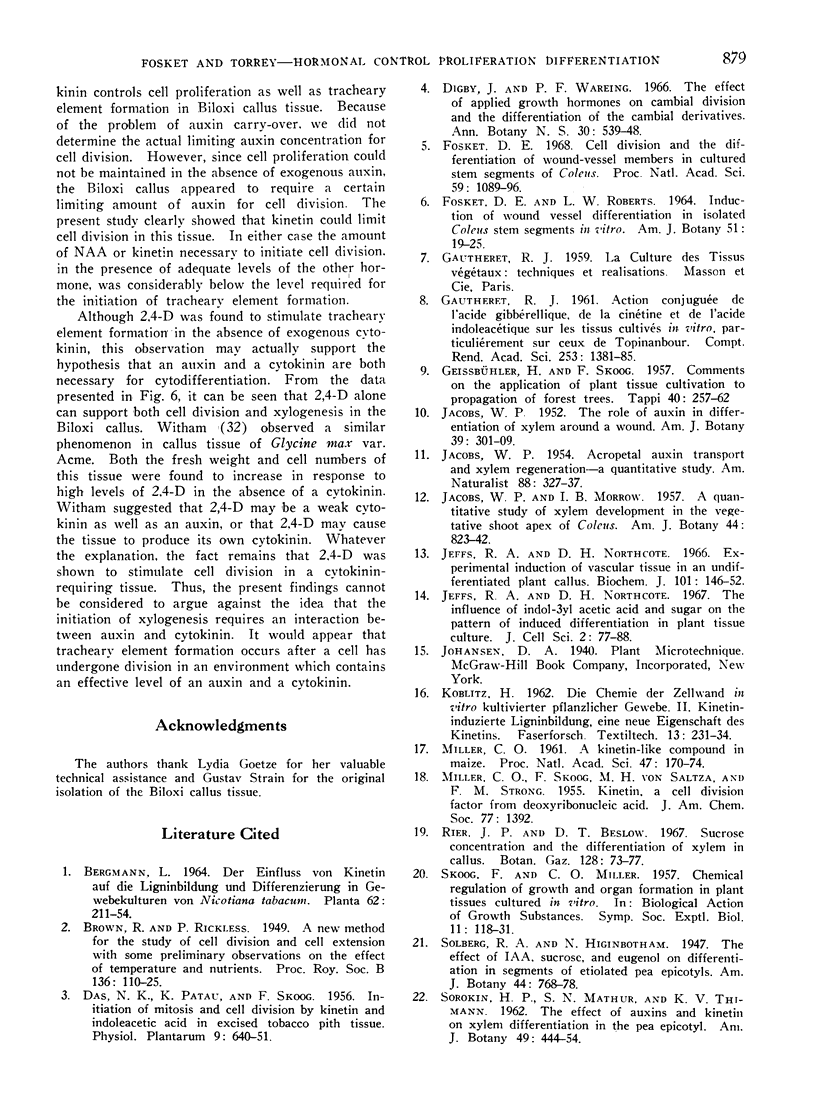
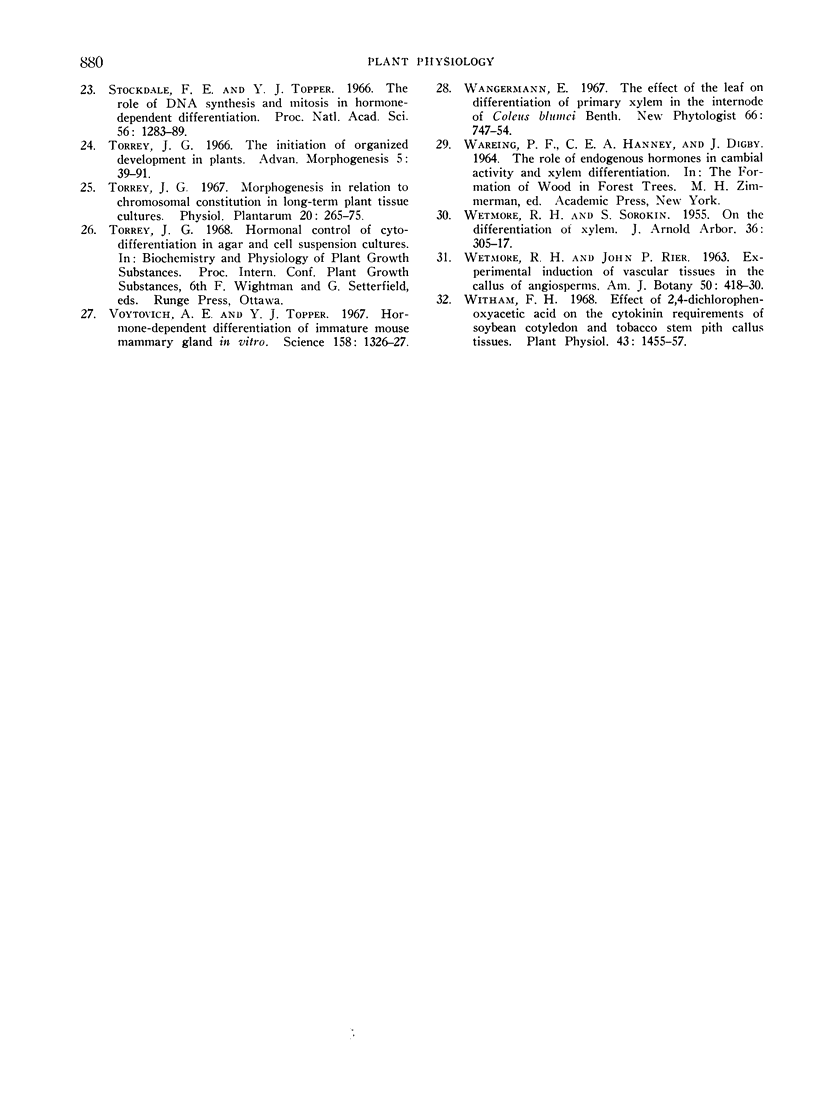
Images in this article
Selected References
These references are in PubMed. This may not be the complete list of references from this article.
- Fosket D. E. CELL DIVISION AND THE DIFFERENTIATION OF WOUND-VESSEL MEMBERS IN CULTURED STEM SEGMENTS OF Coleus. Proc Natl Acad Sci U S A. 1968 Apr;59(4):1089–1096. doi: 10.1073/pnas.59.4.1089. [DOI] [PMC free article] [PubMed] [Google Scholar]
- Jeffs R. A., Northcote D. H. Experimental induction of vascular tissue in an undifferentiated plant callus. Biochem J. 1966 Oct;101(1):146–152. doi: 10.1042/bj1010146. [DOI] [PMC free article] [PubMed] [Google Scholar]
- Jeffs R. A., Northcote D. H. The influence of indol-3yl acetic acid and sugar on the pattern of induced differentiation in plant tissue culture. J Cell Sci. 1967 Mar;2(1):77–88. doi: 10.1242/jcs.2.1.77. [DOI] [PubMed] [Google Scholar]
- Miller C. O. A KINETIN-LIKE COMPOUND IN MAIZE. Proc Natl Acad Sci U S A. 1961 Feb;47(2):170–174. doi: 10.1073/pnas.47.2.170. [DOI] [PMC free article] [PubMed] [Google Scholar]
- SKOOG F., MILLER C. O. Chemical regulation of growth and organ formation in plant tissues cultured in vitro. Symp Soc Exp Biol. 1957;11:118–130. [PubMed] [Google Scholar]
- Stockdale F. E., Topper Y. J. The role of DNA synthesis and mitosis in hormone-dependent differentiation. Proc Natl Acad Sci U S A. 1966 Oct;56(4):1283–1289. doi: 10.1073/pnas.56.4.1283. [DOI] [PMC free article] [PubMed] [Google Scholar]
- Torrey J. G. The initiation of organized development in plants. Adv Morphog. 1966;5:39–91. doi: 10.1016/b978-1-4831-9952-8.50006-7. [DOI] [PubMed] [Google Scholar]
- Voytovich A. E., Topper Y. J. Hormone-dependent differentiation of immature mouse mammary gland in vitro. Science. 1967 Dec 8;158(3806):1326–1327. doi: 10.1126/science.158.3806.1326. [DOI] [PubMed] [Google Scholar]
- Witham F. H. Effect of 2,4-dichlorophenoxyacetic Acid on the cytokinin requirement of soybean cotyledon and tobacco stem pith callus tissues. Plant Physiol. 1968 Sep;43(9):1455–1457. doi: 10.1104/pp.43.9.1455. [DOI] [PMC free article] [PubMed] [Google Scholar]



